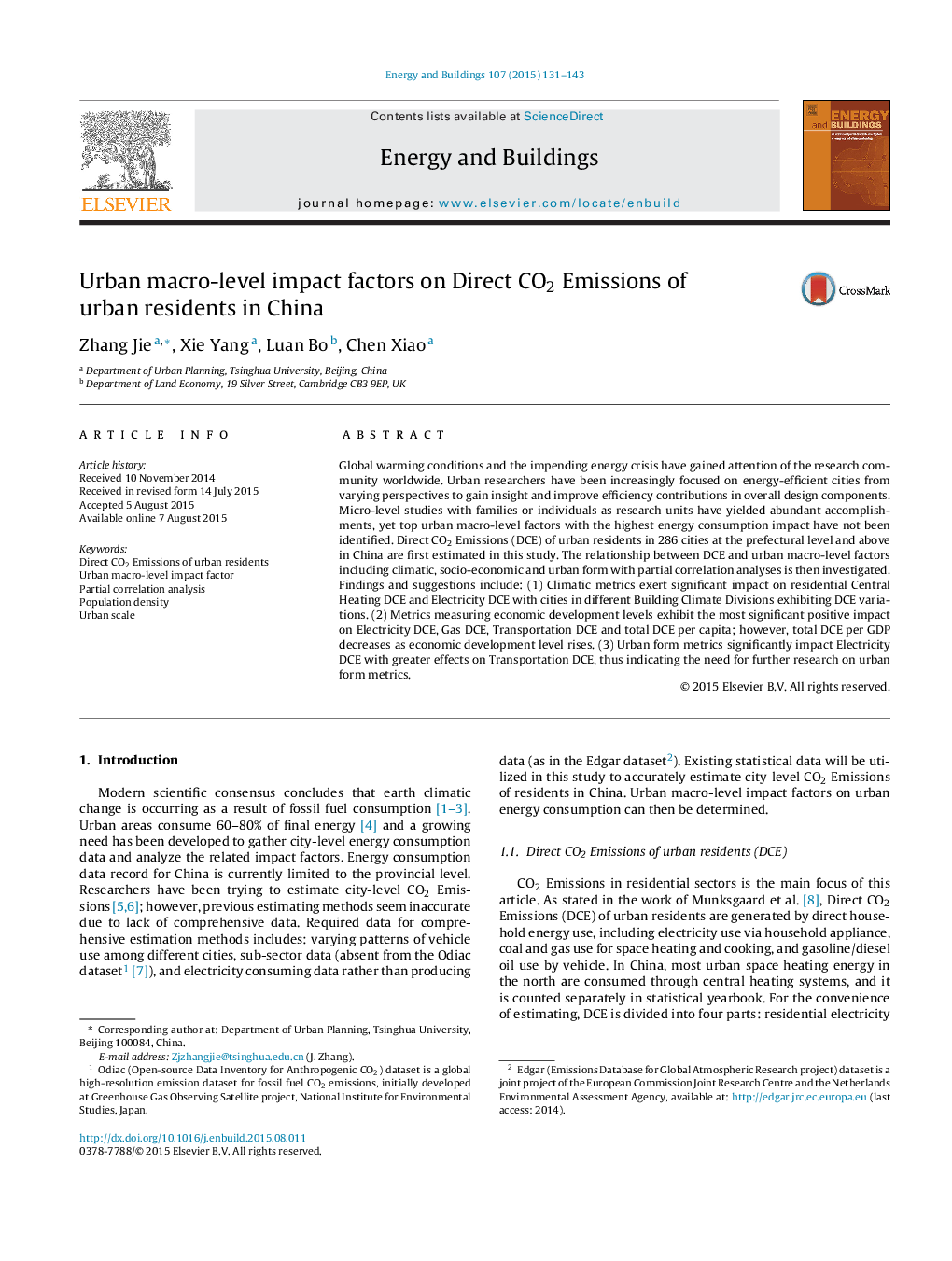| Article ID | Journal | Published Year | Pages | File Type |
|---|---|---|---|---|
| 262334 | Energy and Buildings | 2015 | 13 Pages |
•Direct CO2 Emissions (DCE) of urban residents in Chinese cities are estimated.•Transportation DCE estimating methods are improved by considering vehicle habits.•Top macro-level impact factors on DCE are identified.•Net correlation between urban form metrics and DCE is revealed.
Global warming conditions and the impending energy crisis have gained attention of the research community worldwide. Urban researchers have been increasingly focused on energy-efficient cities from varying perspectives to gain insight and improve efficiency contributions in overall design components. Micro-level studies with families or individuals as research units have yielded abundant accomplishments, yet top urban macro-level factors with the highest energy consumption impact have not been identified. Direct CO2 Emissions (DCE) of urban residents in 286 cities at the prefectural level and above in China are first estimated in this study. The relationship between DCE and urban macro-level factors including climatic, socio-economic and urban form with partial correlation analyses is then investigated. Findings and suggestions include: (1) Climatic metrics exert significant impact on residential Central Heating DCE and Electricity DCE with cities in different Building Climate Divisions exhibiting DCE variations. (2) Metrics measuring economic development levels exhibit the most significant positive impact on Electricity DCE, Gas DCE, Transportation DCE and total DCE per capita; however, total DCE per GDP decreases as economic development level rises. (3) Urban form metrics significantly impact Electricity DCE with greater effects on Transportation DCE, thus indicating the need for further research on urban form metrics.
